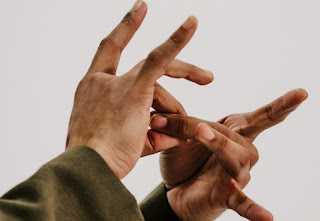Cultural Information: Suskun Languages
Suskun is the generic term for non-verbal
communications. It mainly involves hand
and finger gestures, with facial expressions and body language being used for
occasional emphasis. Suskun signing
techniques originated on Varathusia. The
earliest known versions were developed by the Varagans for communicating with
their mute-servants. (See separate entry for mute-servants)
The Varagan variants consist of three distinct styles:
- Ahrgebiq is the most basic and
easiest to learn. Each gesture
conveys a whole word or phrase.
- Ourariq is a more sophisticated
form of signing. It involves subtle
finger movements and sketching complex patterns in the air. It is far more expressive, enabling
users to communicate deeper meanings, such as emotions and other abstract
concepts.
- Ipnariq is the most difficult signing style. It is more of a code-language than an everyday communication method. It is used for secret and confidential communications. It involves a combination of extremely subtle finger movements and body language. Some of its signing techniques can be disguised as involuntary twitches or fidgeting with hair, clothing and other objects.
In the early years of the Carpathian Movement, some of the most progressive and resourceful Carpathian Spy Masters learned the three Varagan Suskun styles and adapted them for their own purposes. Although Carpathians have never practised tongue-cutting, they do recruit natural mute persons as spies.
Sartorians have used dance movements and hand gestures for communication purposes throughout their history. During their more turbulent times, when tribal wars happened on a frequent basis, their code-talkers made good use of adapted Suskun styles and adding them to their own code-signing vocabulary.




Comments
Post a Comment
Please keep it polite and keep your comments related to the content of the blogs.